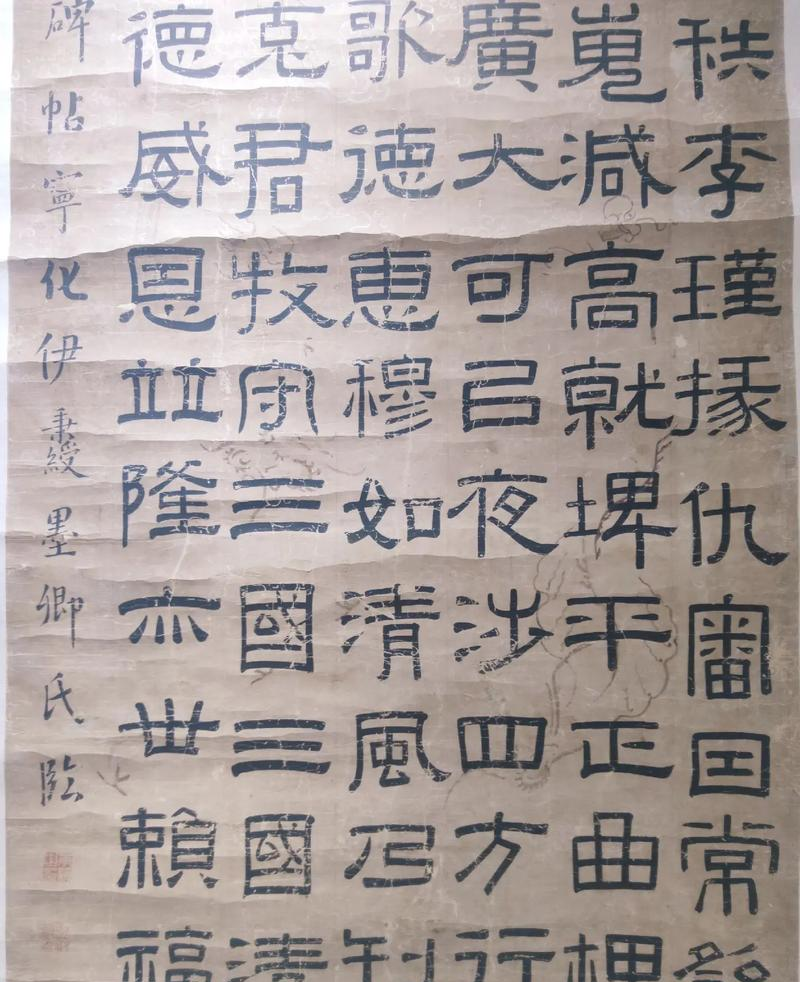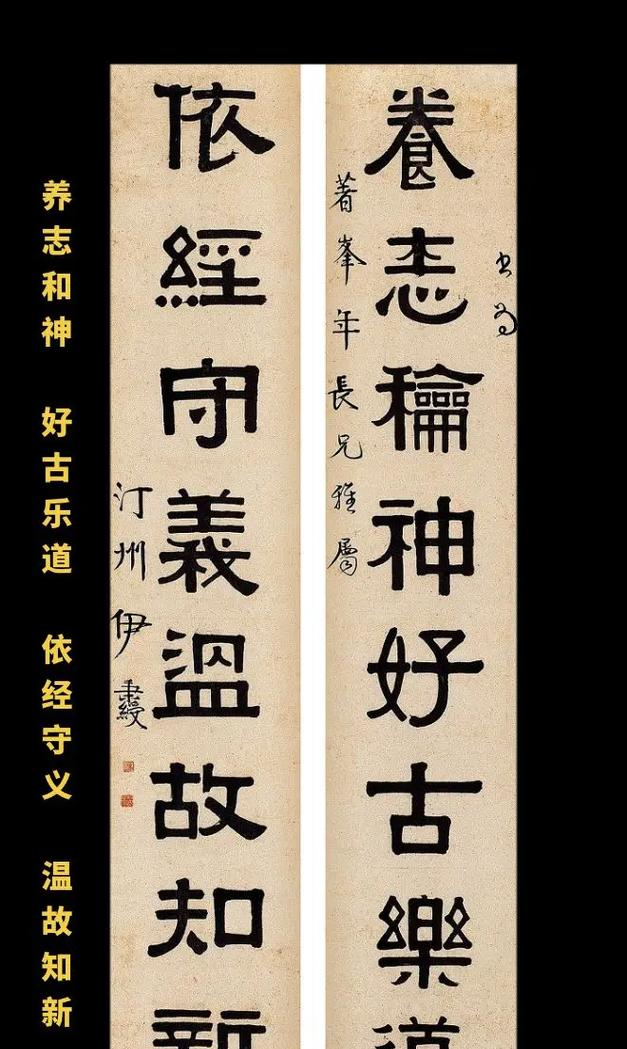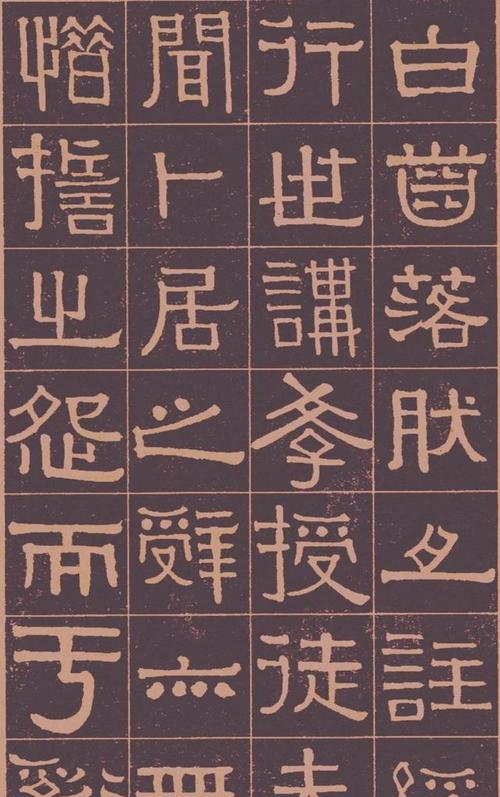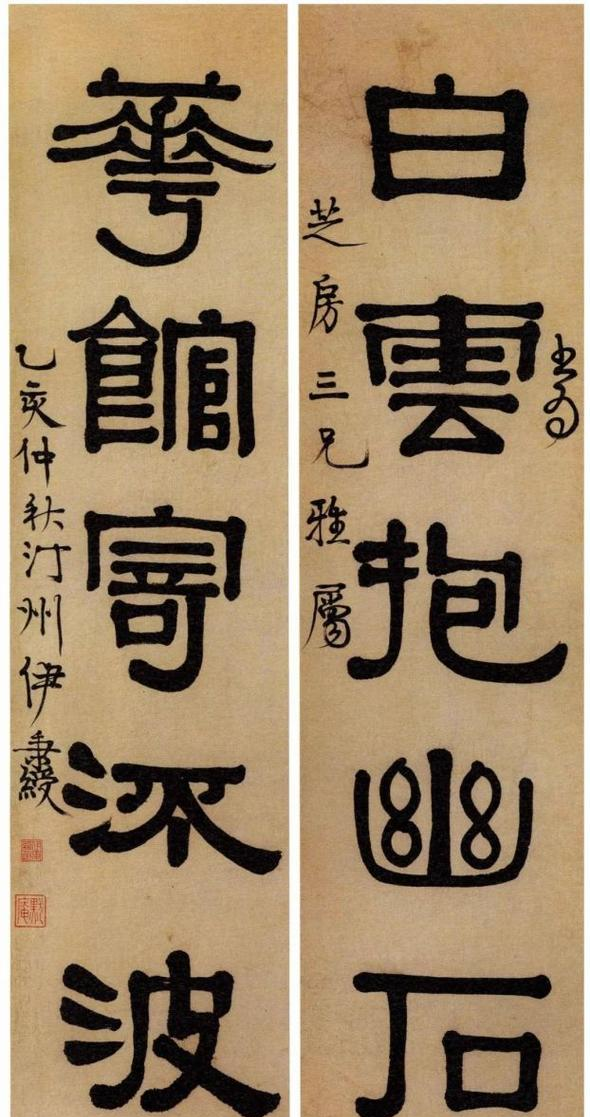↑↑Please click the “blue text” above to follow↑↑
The Calligraphy of Yi Bing Shou: A Masterpiece Resembling 3D Printing
Yi Bing Shou, a renowned calligrapher of the Qing Dynasty, is famous for his unique style of clerical script. His calligraphy is powerful and robust, resembling the resurgence of a thousand-year-old stone tablet. To this day, netizens marvel at his handwriting, claiming that each character appears as if it has been 3D printed—sharp-edged and full of three-dimensionality.

However, many may not know that this calligraphy master was also an expert in landscape art. Yi Bing Shou, styled Hong Shou and known as Nan Ming, was born in the 29th year of the Qianlong reign (1764). His life resembles a dramatic epic of a literati, filled with both the glory of academic success and the frustrations of a tumultuous career.

Yi Bing Shou’s life trajectory is filled with contradictions and conflicts. In his youth, he inherited a family tradition of poetry and literature, aspiring to become a learned scholar; yet, in his prime, he had to struggle for a living, drifting in the business world. This conflict between ideals and reality is like a surging river, both grand and tumultuous, yet hiding undercurrents of helplessness.

Among Yi Bing Shou’s many works, a lesser-known inscription stands out—”Inscription on the Song Copy of the Nine Cheng Palace Li Quan Ming.” This concise yet powerful text not only showcases his profound understanding of calligraphy but also reflects his unique insights on life. Confronted with this masterpiece, Yi Bing Shou’s heart must have been tumultuous, filled with mixed emotions. In the inscription, he wrote: “This stele has a magnificent aura, and the brushwork is vigorous; it truly represents the pinnacle of calligraphy.”

Yi Bing Shou’s life experiences are closely intertwined with the turmoil of the Qing Dynasty. Do you think he was merely a detached scholar? Not at all. In that era of internal strife and external threats, Yi Bing Shou personally experienced the impact of the Taiping Rebellion and witnessed the Qing Dynasty’s decline from prosperity to ruin. This experience undoubtedly had a profound influence on his artistic creation and life attitude.

——It is against this grand historical backdrop that Yi Bing Shou’s calligraphy art increasingly exhibits a heavy and steady quality.
Yi Bing Shou’s life embodies the spiritual core of Chinese literati—a steadfast adherence to traditional culture, coupled with a flexible approach to reality. His calligraphy is not just an art form but also a spiritual refuge. In chaotic times, he built cultural fortresses with his brush and ink, leaving behind invaluable spiritual wealth for future generations.
The story of Yi Bing Shou is both admirable and lamentable. We admire his outstanding achievements in art, yet lament his tumultuous life experiences. However, it is precisely this dramatic life that shaped his unique artistic style and personal charm.
Yi Bing Shou’s clerical script is not only a calligraphic skill but also a stance on life. It is as steadfast as a mountain yet retains a sense of vitality; it is as square as a seal yet brimming with life. This contradictory quality is a true reflection of Yi Bing Shou’s art and life.
In this age of information explosion, what insights does Yi Bing Shou’s story offer us? Perhaps we should learn to maintain inner strength and composure amidst the complexities of reality, just as each of his characters is solid and powerful yet full of spirit.